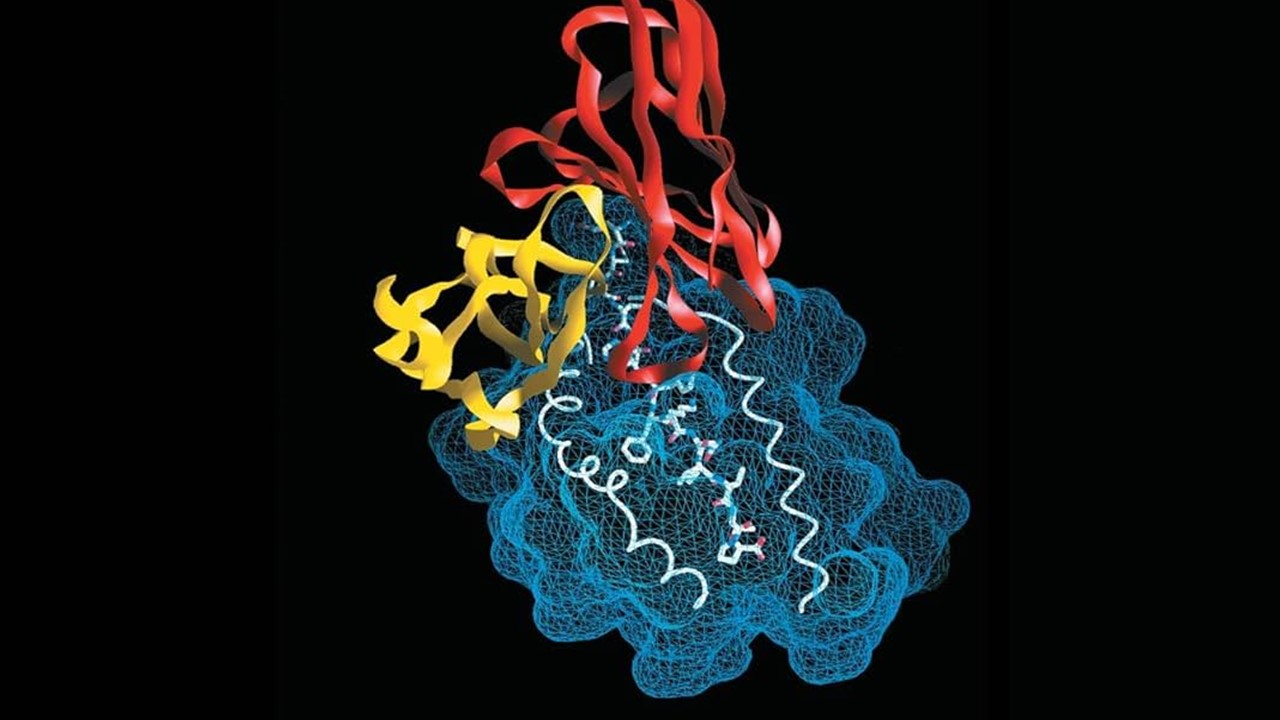The intricate workings of the human brain have long captivated scientists seeking to unlock its mysteries. At the forefront of this pursuit lies the 5-HT1A receptor, a pivotal player in neurotransmission, particularly in the context of serotonin signaling. As a subtype of the serotonin receptor family, the 5-HT1A receptor exerts its influence through G protein-coupled mechanisms, with a pervasive presence in key brain regions such as the cerebral cortex, hippocampus, and amygdala. Notably, its role extends beyond neurotransmission, encompassing cognitive processes and emotional regulation, rendering it a tantalizing target for therapeutic intervention.
Exploring the Therapeutic Potential of 5-HT1A Modulation
The 5-HT1A receptor, a subtype of the serotonin (5-HT, 5-hydroxytryptamine) receptor family, is widely distributed throughout the central nervous system, particularly in areas such as the cerebral cortex, hippocampus, septum, amygdala, and raphe nucleus. Functionally, it plays a pivotal role in regulating neurotransmitter release, including serotonin, dopamine, glutamate, and acetylcholine, thereby influencing various physiological processes such as mood, cognition, anxiety, and motor function. Pharmacologically, the 5-HT1A receptor is a target for a diverse array of psychoactive drugs, including atypical antipsychotics, selective serotonin reuptake inhibitors (SSRIs), and anxiolytics. Its significance in drug discovery stems from its involvement in psychiatric disorders like schizophrenia, depression, anxiety, and neurodegenerative diseases such as Alzheimer’s and Parkinson’s. Understanding its homology, function, and pharmacological effects is crucial for the development of novel therapeutic agents targeting this receptor subtype.
Case in point, the 5-HT1A receptor has emerged in recent years as a focal point in drug discovery efforts aimed at addressing cognitive deficits in conditions like schizophrenia and neurodegenerative diseases. Atypical antipsychotics, endowed with 5-HT1A partial agonist activity, have garnered attention for their cognitive enhancement properties, offering a glimmer of hope for patients grappling with cognitive impairments. Moreover, the prospect of alleviating anxiety and depression through 5-HT1A agonists has spurred investigations into compounds like buspirone and tandospirone, underscoring the diverse therapeutic avenues afforded by 5-HT1A modulation.
The HTS Landscape and QSAR Framework
The advent of high throughput screening (HTS) has revolutionized the drug discovery landscape, enabling the rapid screening of vast chemical libraries in search of promising leads. Leveraging quantitative structure-activity relationship (QSAR) modeling, researchers can harness computational tools to sift through expansive chemical datasets, pinpointing molecules with the desired pharmacological profiles. By delineating the structural features underpinning ligand-receptor interactions, QSAR models provide invaluable insights into developing and optimizing novel therapeutics.
Central to the QSAR framework is the curation of datasets meticulously curated from repositories like the WOMBAT database and the Psychoactive Drug Screening Program (PDSP). The WOMBAT database stores a diverse range of molecular structures, while the Psychoactive Drug Screening Program (PDSP) focuses specifically on compounds with psychoactive properties and their interactions with various receptors. Through stringent data curation protocols, including structural normalization and duplicate removal, researchers ensure the fidelity and reliability of the datasets under scrutiny. Armed with a diverse array of molecular descriptors generated through software like Dragon, QSAR models take shape, capturing the nuanced structural attributes governing ligand binding affinity.
Robust QSAR Models: Precursor to Novel Therapeutics
The validation of QSAR models constitutes a critical juncture in the drug discovery continuum, underpinned by rigorous internal and external validation procedures. Employing techniques like Y-randomization and five-fold cross-validation, researchers scrutinize the predictive performance of QSAR models, ensuring their generalizability and robustness across diverse chemical landscapes. Y-randomization involves randomly shuffling the response variable in a dataset to assess the robustness of QSAR models by comparing the performance of models built with actual activity data against those generated with randomized activity values. In contrast, five-fold cross-validation partitions the dataset into five subsets, with each subset used as a testing set once while the remaining data serves as the training set, allowing for rigorous evaluation of model performance and generalization to unseen data. By adhering to stringent validation criteria, researchers uphold the integrity and reliability of QSAR-based predictions, laying the groundwork for informed decision-making in virtual screening endeavors.
Notably, though, the culmination of QSAR modeling efforts manifests in delineating predictive models capable of discriminating between 5-HT1A binders and non-binders with remarkable precision. Through meticulous validation procedures, encompassing internal validation (i.e., partitioning a dataset into training and testing sets, where the model is trained on the training set and then evaluated on the separate testing set to assess its predictive performance within the dataset itself) and external validation (i.e., applying the trained model to an entirely different dataset that was not used during the model training phase, to evaluate its performance on unseen data from a different source or context), researchers affirm the predictive prowess of QSAR models, paving the way for their application in virtual screening endeavors. Harnessing the collective insights gleaned from QSAR models, researchers embark on a journey of virtual screening, unearthing a trove of candidate molecules poised for experimental validation.
Bridging the Divide Between Prediction and Reality
The experimental validation of QSAR-derived predictions then represents the ultimate litmus test for the efficacy and reliability of computational models. Employing radioligand binding assays, researchers scrutinize the binding affinity of candidate molecules against the 5-HT1A receptor, bridging the chasm between in silico predictions and experimental reality. Through meticulous experimental validation, researchers corroborate the predictive power of QSAR models, heralding the emergence of novel 5-HT1A modulators with therapeutic potential.
QSAR modeling no doubt emerges as a potent tool for navigating the labyrinthine landscape of the neurodegenerative disease drug discovery process. By harnessing the predictive power of computational models, researchers uncover novel 5-HT1A modulators poised to reshape the treatment paradigm for cognitive disorders and neurodegenerative diseases. As the quest for therapeutic innovation unfolds, QSAR modeling stands as a beacon of hope, illuminating the path toward precision medicine and improved patient outcomes.
Study DOI: 10.2174%2F1386207318666150703113948
Engr. Dex Marco Tiu Guibelondo, B.Sc. Pharm, R.Ph., B.Sc. CpE
Editor-in-Chief, PharmaFEATURES

Subscribe
to get our
LATEST NEWS
Related Posts

Medicinal Chemistry & Pharmacology
Aerogel Pharmaceutics Reimagined: How Chitosan-Based Aerogels and Hybrid Computational Models Are Reshaping Nasal Drug Delivery Systems
Simulating with precision and formulating with insight, the future of pharmacology becomes not just predictive but programmable, one cell at a time.

Medicinal Chemistry & Pharmacology
Coprocessed for Compression: Reengineering Metformin Hydrochloride with Hydroxypropyl Cellulose via Coprecipitation for Direct Compression Enhancement
In manufacturing, minimizing granulation lines, drying tunnels, and multiple milling stages reduces equipment costs, process footprint, and energy consumption.

Medicinal Chemistry & Pharmacology
Decoding Molecular Libraries: Error-Resilient Sequencing Analysis and Multidimensional Pattern Recognition
tagFinder exemplifies the convergence of computational innovation and chemical biology, offering a robust framework to navigate the complexities of DNA-encoded science
Read More Articles
Magnetic Nanoengineering: Overcoming Biological Variability and Enhancing Therapeutic Precision
The future of nanomedicine lies in harmonizing precision, accessibility, and ecological responsibility, ushering in an era where therapies are tailored to individual biological landscapes.












